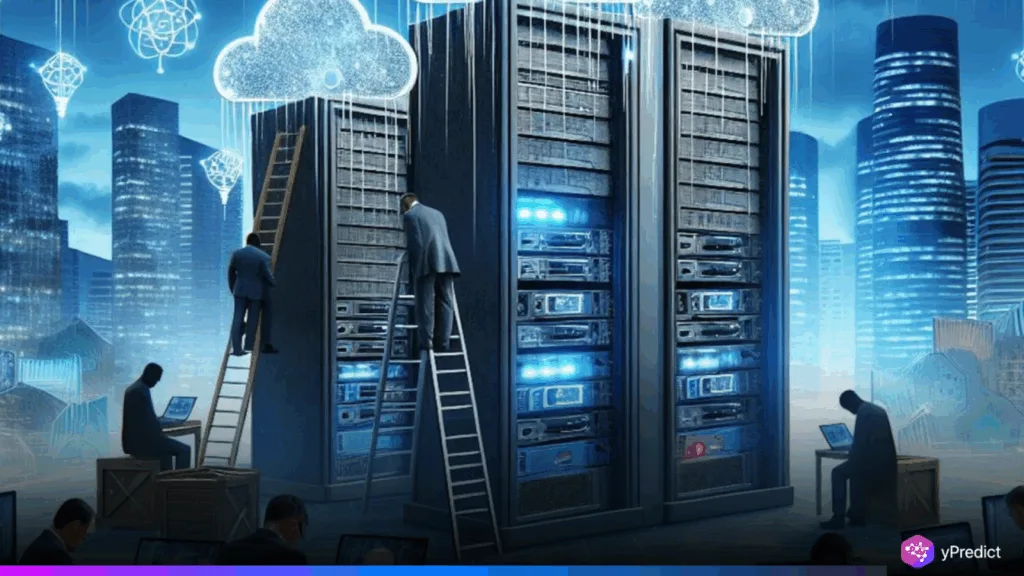
Americans are set to have outspent office buildings in 2025 on data centers. A graph provided by Erik Brynjolfsson, using Census data, illustrates that spending on data centers is rocketing into the new financing territory of more than 50 billion dollars, which is beyond the peak made over office construction that was about 40 billion dollars. This trend began picking up the pace following the 2022 release of ChatGPT and is how AI is transforming the economy. Firms are investing billions of dollars in machine learning and cloud computer infrastructure. With demand for GPU-heavy workloads growing fast, traditional office buildings are being left behind. The new American workplace is increasingly digital, distributed, and built for servers, not people.
From Desks to Racks: A Shift in How America Builds
A chart by economist Joseph Politano shows a stunning reversal: U.S. spending on data centers has overtaken office buildings for the first time. In 2015, office construction dominated. But in 2025, data center spending crossed the $50 billion mark, driven by surging AI demand. This change tracks closely with the rise of generative AI tools like ChatGPT and the infrastructure required to power them. Hyperscalers Amazon, Google, and Meta are building at record speed to support cloud services, model training, and inference. Office construction, meanwhile, has stalled since peaking in 2020, dampened by remote work and corporate downsizing.
Goldman Sachs projects a 165% increase in data center power demand by 2030. McKinsey notes that AI is the biggest driver of capital expenditure in digital infrastructure. New construction is less about desks and conference rooms and more about racks, cooling systems, and fiber optics. Even smaller firms are investing in colocation and edge data centers. In short, America isn’t just shifting its tech stack; it’s rebuilding its physical footprint to support it. The buildings of the future aren’t for people working in them; they’re for the machines doing the work. This is the AI economy in concrete form.
Energy Demands, Carbon Costs, and Global Trends
The data center boom brings environmental and geopolitical implications. TIME reports that AI-driven construction could double carbon emissions from data centers by 2030, threatening global climate goals. These facilities consume massive power, often more than entire towns, mainly for cooling and GPU processing.
Analysts at Moody’s and Aon warn that rapid build risks overcapacity and grid strain. Aon calls for sustainable design, improved water usage, and localized energy sourcing. But implementation lag. China and the U.S. are in a silent arms race over GPU supply and data center dominance.
Meanwhile, office space is declining or going unused in major cities. Real estate firms report rising vacancy rates and plummeting commercial lease renewals. As investors pull capital from office parks and pivot to data infrastructure, it’s clear: AI isn’t just changing what we build, it’s changing why we build. If unchecked, this transformation could centralize power, literally and politically, in the hands of those who own computers, energy, and AI itself.
The Digital Economy’s New Land Grab Is Data-Driven
Data centers are the new skyscrapers of the AI age. Once symbols of corporate growth, office towers now sit half-empty while server farms eat up land, power, and capital. This isn’t just a tech trend; it’s an economic rewrite. Who builds the computer and owns the intelligence? As Brynjolfsson put it, “In what year will the U.S. spend more on buildings for AI than for human workers?” The answer is now. What comes next will define the balance between innovation and inequality, efficiency and environmental cost. One thing is certain: the future is being built, and it’s humming with GPUs, not humans.







